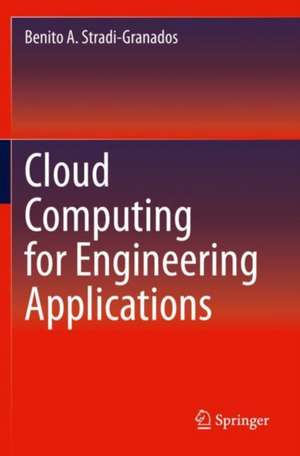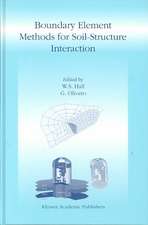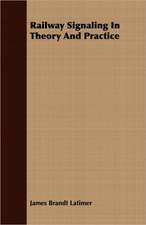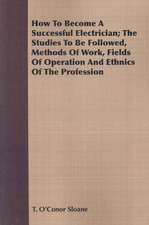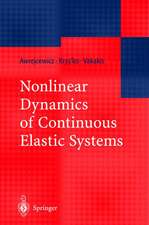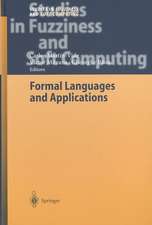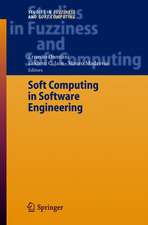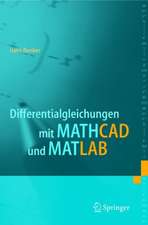Cloud Computing for Engineering Applications
Autor Benito A. Stradi-Granadosen Limba Engleză Paperback – 6 apr 2021
| Toate formatele și edițiile | Preț | Express |
|---|---|---|
| Paperback (1) | 506.50 lei 38-44 zile | |
| Springer International Publishing – 6 apr 2021 | 506.50 lei 38-44 zile | |
| Hardback (1) | 575.84 lei 38-44 zile | |
| Springer International Publishing – 5 apr 2020 | 575.84 lei 38-44 zile |
Preț: 506.50 lei
Preț vechi: 625.31 lei
-19% Nou
Puncte Express: 760
Preț estimativ în valută:
96.93€ • 105.25$ • 81.42£
96.93€ • 105.25$ • 81.42£
Carte tipărită la comandă
Livrare economică 18-24 aprilie
Preluare comenzi: 021 569.72.76
Specificații
ISBN-13: 9783030404475
ISBN-10: 3030404471
Pagini: 353
Ilustrații: XXXIII, 353 p. 588 illus., 576 illus. in color.
Dimensiuni: 155 x 235 mm
Ediția:1st ed. 2020
Editura: Springer International Publishing
Colecția Springer
Locul publicării:Cham, Switzerland
ISBN-10: 3030404471
Pagini: 353
Ilustrații: XXXIII, 353 p. 588 illus., 576 illus. in color.
Dimensiuni: 155 x 235 mm
Ediția:1st ed. 2020
Editura: Springer International Publishing
Colecția Springer
Locul publicării:Cham, Switzerland
Cuprins
Introduction.- The Use of Cloud Computing for Engineering Applications.- From the office to the cloud, why should you care?.- Generating a Model.- Building a Prototype.- Motion Studies.- MATLAB PRIMER.- Shell Installation.
Notă biografică
Dr. Benito A. Stradi-Granados has 22 years of experience in higher education. He is in charge of the training of faculty members in Cloud Computing at the Institute of Technology of Costa Rica. A set of training sessions are provided on a semester basis to foster the use of Cloud Technologies. Through the Office of the Vice President for Research provides computational resources and support to faculty members, and to graduate students and industry as needed. He also teaches in the Departments of Chemical Engineering and Chemistry at the University of Costa Rica where he imparts classes on Process Control & Instrumentation and Process Design. He is author of a number of publications on the application of mathematical methods to process separations and financial markets. Professor Stradi-Granados has a long history of extension and collaboration with industry. He spent two years as an Assistant Professor in the Audubon Sugar Institute at Louisiana State University working on thebiochemical and thermochemical conversion of biomass into fuels, both projects sponsored by the DOE. He holds the degrees of B. Sc. (U. of Missouri, USA) and Ph. D. (U. of Notre Dame, USA) in Chemical Engineering, a M. E. Sc. in Chemical and Biochemical Engineering from University of Western Ontario (Canada) and a M. Sc. (U. of Essex, UK) in Finance. A graduate from the UK's Chevening Program and Coca Cola's Latin America 2000 Fellowship Program, he continues to promote the new talent and leaders to guide industries and government into a sustainable challenging future.
Textul de pe ultima copertă
This book explains the use of cloud computing systems for engineering applications to satisfy the need for enterprise level, state-of-the-art computational capacities at an affordable cost. As huge costs are involved in the maintenance and timely renovation of computational capabilities, particularly for projects that require significant computational capacity, cloud services can achieve considerable savings for users and organizations engaged in engineering research and development. Dr. Stradi explains how to extract a maximum value from every dollar invested in cloud computer server. The types of facilities located around the world that lease their resources to customers interested in reducing the internal overhead and implementation time. The volume features chapters on model generation, motion studies, and prototyping is ideal for students, researchers, practitioners, and facilities managers across a range of engineering domains.
- Introduces computation in the cloud for engineering projects and delineates why readers should care;
- Explains management strategies for the most cost-effective use of computational cloud capacity;
- Discusses best practices in implementation and start-up to keep costs low;
- Illustrates cloud computing use and capabilities with well developed examples starting from scratch in COMSOL®, MATLAB® and SOLIDWORKS®.
Caracteristici
Introduces computation in the cloud for engineering projects and delineates why readers should care Explains management strategies for the most cost-effective use of computational cloud capacity Discusses best practices in implementation and start-up to keep costs low Illustrates cloud computing use and capabilities with well developed examples starting from scratch in COMSOL®, MATLAB® and SOLIDWORKS®
